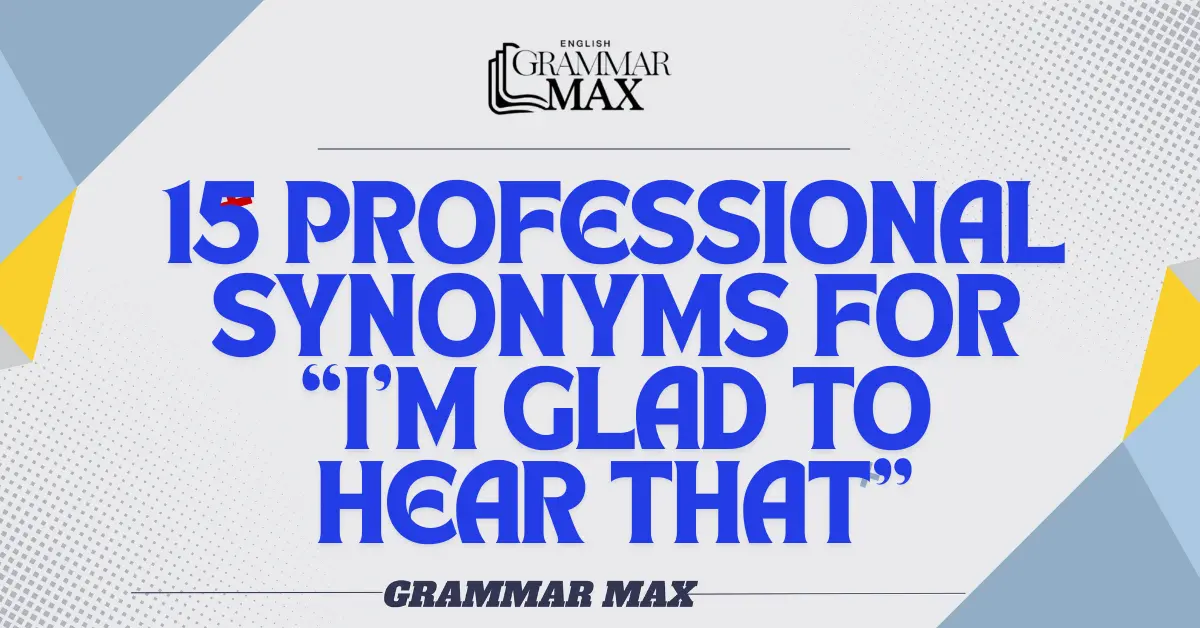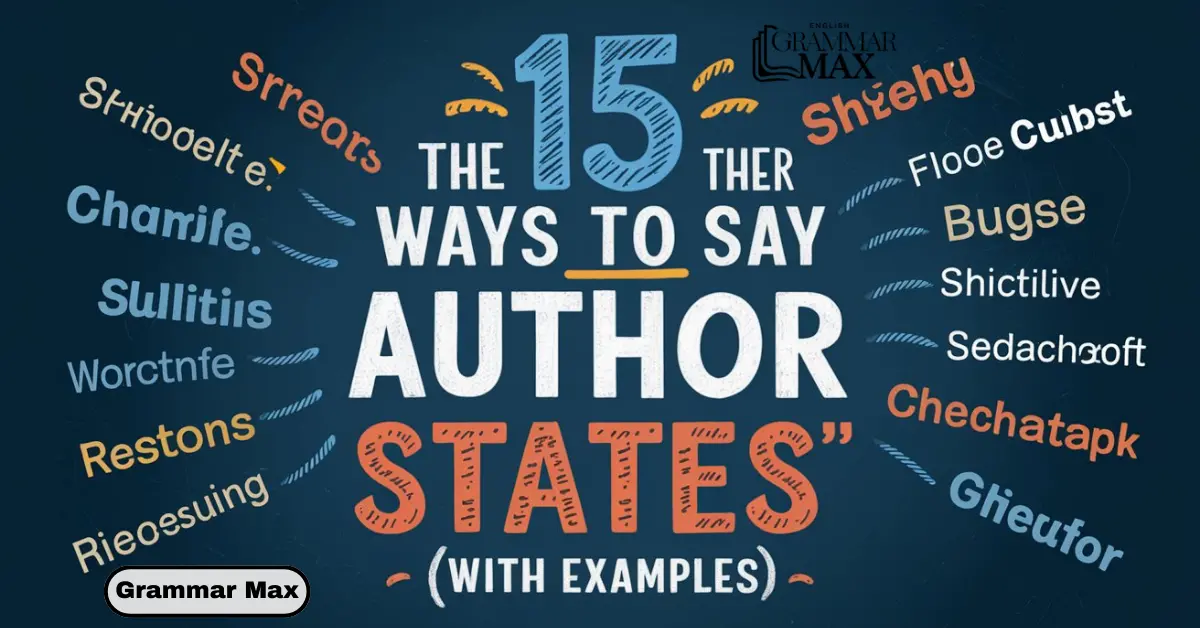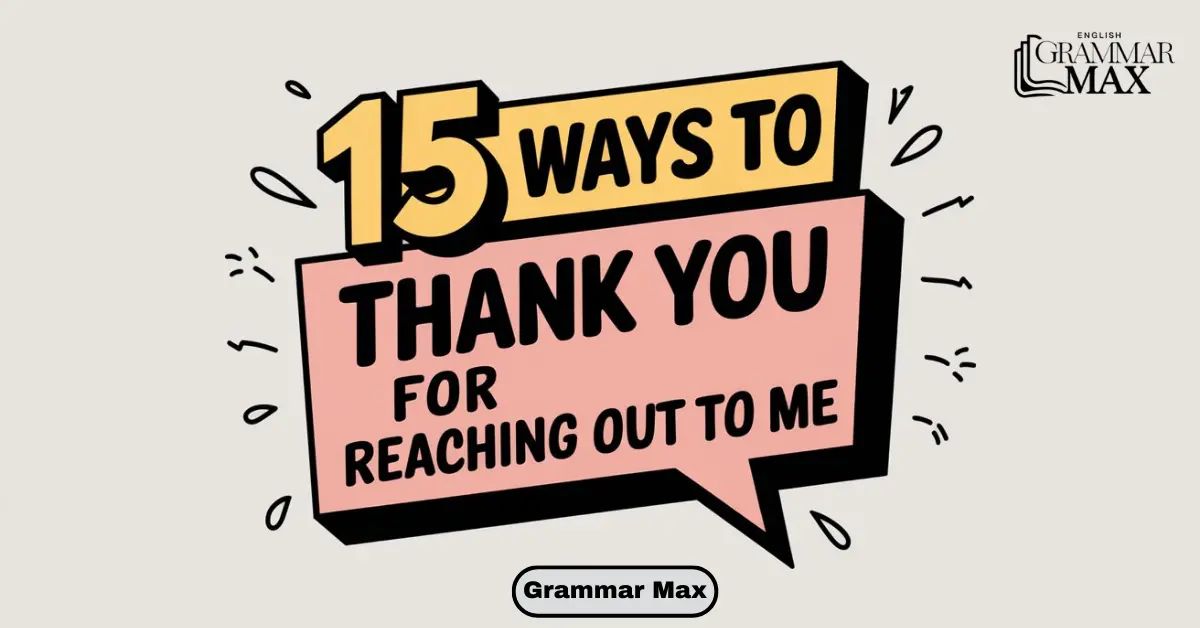“I’m glad to hear that” is a phrase commonly used in professional communication to express positive sentiment and acknowledge good news. Whether in workplace contexts or personal exchanges, this phrase conveys appreciation and warmth. However, overusing it in emails, reports, or meetings can feel repetitive. To maintain a polite tone while improving your communication style, it’s important to explore alternative phrases that are equally professional and versatile.
Incorporating a variety of expressions into your vocabulary not only helps you express positivity but also enhances your messaging in professional settings. This article will explore 15 professional alternatives to “I’m glad to hear that,” helping you improve your workplace communication and build strong relationships.
Alternative ways to say “I’m glad to hear that”
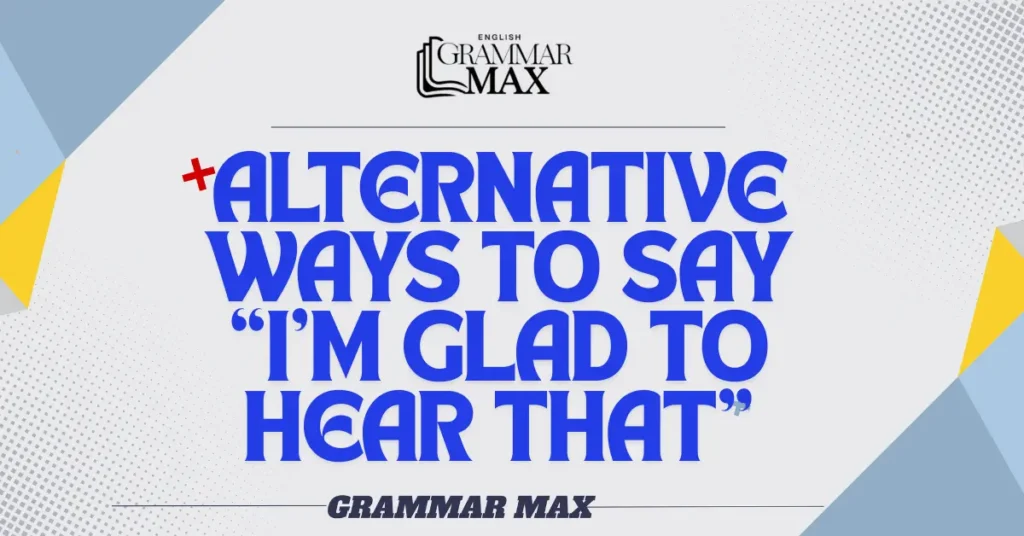
You can use these ways instead to say I’m Glad to Hear That:
- I’m pleased to learn that
- It’s wonderful to hear that
- I’m delighted to hear this
- That’s fantastic news
- I appreciate the update
- It’s reassuring to hear that
- I’m happy to hear that
- That’s encouraging to hear
- Good to know
- I’m glad to hear everything is fine and normal
- It’s heartening to hear that
- I’m thrilled to hear this
- This is excellent to hear
- I’m grateful to hear this
- That’s great to hear
I’m pleased to learn that
This phrase exudes a polite tone and works well in professional communication, especially when sharing positive sentiment about someone’s progress. It emphasizes your acknowledgment of an update while remaining formal and respectful in workplace contexts. It’s one of the professional alternatives to convey positivity without being repetitive.
For example, in professional settings, you might write, “I’m pleased to learn that the project exceeded expectations.” Such alternative phrases not only help build strong relationships but also show appreciation for achievements, contributing to a culture that can boost morale.
Best Use:
Best used in formal updates to show acknowledgment and positive sentiment for progress or results.
Example:
Dear Sarah,
I’m pleased to learn that the project was completed ahead of schedule. Great work by you and the team!
It’s wonderful to hear that
This expression conveys enthusiasm while maintaining a respectful tone, making it ideal for professional settings. It emphasizes expressing positivity in workplace communication and leaves the recipient feeling valued and motivated.
For instance, saying, “It’s wonderful to hear that your initiative gained approval,” reflects your support in corporate environments. By using other ways to say that’s good to hear, you acknowledge success with an uplifting tone that inspires confidence and strengthens workplace rapport.
ScienceDirectExample:
Hi John,
It’s wonderful to hear that your department has exceeded its quarterly targets. Congratulations on such excellent progress!
I’m delighted to hear this
This phrase is perfect for adding a personal yet professional demeanor to your messages. It strikes a balance between formality and enthusiasm, making it suitable for various workplace scenarios where positive feedback is necessary.
An example could be, “I’m delighted to hear this update about the successful client meeting.” This approach not only shows appreciation but also reinforces trust in team dynamics, helping to foster strong relationships in corporate environments.
Best Use:
Perfect for celebrating significant accomplishments or milestones in professional settings.
Example:
Dear Elizabeth,
I’m delighted to hear this update about the new partnership. This is a significant milestone for the organization.
That’s fantastic news
This expression reflects positive sentiment and genuine excitement, making it one of the most versatile phrase options for professional communication. It works best in moments of celebration, where acknowledgment of achievements can improve motivation.
For example, writing “That’s fantastic news about the product launch success!” in an email reflects your enthusiasm and encouragement. Such phrases resonate well in formal situations and show optimism in workplace contexts.
Example:
Hi Michael,
That’s fantastic news about the client’s feedback on your presentation. Keep up the excellent work!
I appreciate the update
This phrase is a more neutral way to acknowledge updates while maintaining a courteous tone. It’s particularly useful when responding to regular updates in office correspondence or when formal acknowledgment is required.
For instance, you could say, “I appreciate the update on the recent changes to the process.” This subtle acknowledgment reinforces your role in the feedback loop and reflects a respectful tone in organizational communication.
Best Use:
A professional and neutral phrase to acknowledge updates in business interactions.
Example:
Dear Amy,
I appreciate the update on the software rollout. It’s reassuring to know everything is progressing smoothly.
It’s reassuring to hear that
This phrase highlights stability and conveys supportive feedback, particularly in workplace scenarios involving problem-solving or challenges. It’s a professional way to show relief and optimism in response to progress.
For example, “It’s reassuring to hear that the concerns have been resolved” fits well in corporate environments. By using such language alternatives, you convey encouragement while recognizing effort, which helps to uplift spirits and energize teams.
Example:
Hi Paul,
It’s reassuring to hear that the recent system upgrade has improved efficiency. Thank you for your diligence in overseeing the process.
I’m happy to hear that
This straightforward phrase conveys warmth and simplicity, making it one of the most commonly used better expressions. It’s effective in business interactions where you want to share optimism without being overly formal.
For example, writing “I’m happy to hear that the team reached its goals” balances professionalism with relatability. Using this expression in formal communication strengthens workplace rapport and fosters a positive tone in messages.
Best Use:
Best used for conveying warmth and encouragement in formal communication.
Example:
Dear Emma,
I’m happy to hear that the new workflow is meeting expectations. Your efforts have not gone unnoticed.
That’s encouraging to hear
This expression conveys constructive feedback and support, making it ideal for updates or progress reports. It’s a great way to share optimism and inspire confidence in team dynamics.
For example, you might say, “That’s encouraging to hear about the renewed commitment to the project.” Such phrases are not only synonym suggestions but also tools to show appreciation and foster a culture of collaborative connections in corporate environments.
Example:
Hello Rachel,
That’s encouraging to hear about the team’s renewed focus on productivity. Let’s build on this momentum.
Is it Professional to Say: I’m Glad to Hear That?
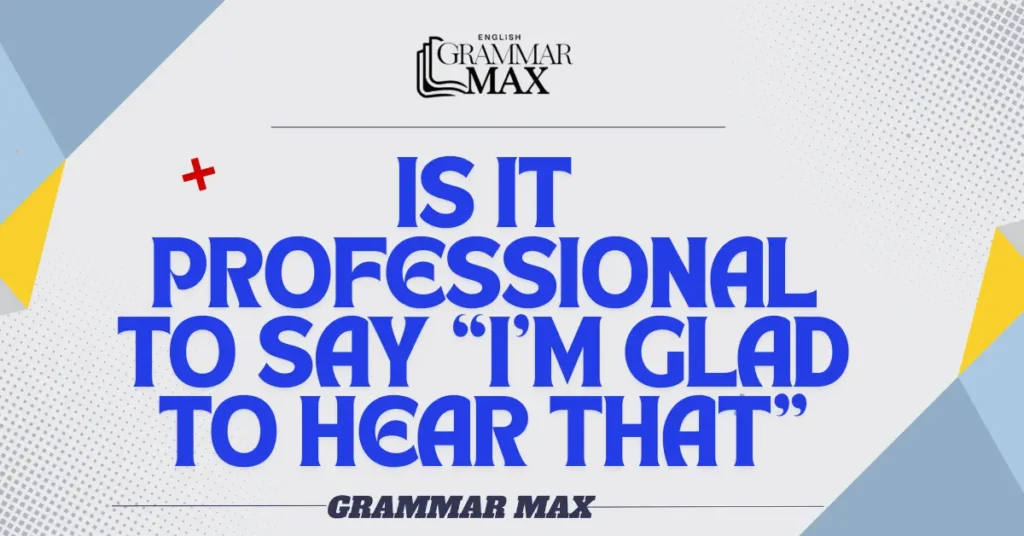
“I’m glad to hear that” is indeed a professional expression often used in workplace communication to convey positive sentiment and acknowledge updates. It demonstrates a polite tone and helps build strong relationships in professional settings.
However, overusing it can make your communication seem repetitive or lack variety. In corporate environments, employing alternative phrases ensures clarity and keeps conversations engaging. While the phrase is acceptable, diversifying expressions enhances your professional demeanor and communication style.
Pros
- Shows appreciation and maintains a polite tone.
- Helps boost morale and encourage team dynamics.
Cons
- Can become repetitive in frequent use.
- May lack the tailored nuance needed in varied situations.
Frequently Asked Questions
What does “I’m glad to hear that” mean?
It means you are expressing happiness or relief about positive news or an update. It conveys positive sentiment in a polite tone.
How do you say “I am glad to hear that”?
You can use alternative phrases like “I’m pleased to learn that” or “That’s wonderful to hear” to maintain a professional demeanor.
What to say instead of “I’m glad to hear”?
Use phrases like “That’s fantastic news” or “It’s heartening to hear that” for variety and a more uplifting tone.
What to reply to “I’m glad to hear that”?
Respond with gratitude, such as “Thank you for your kind words” or “I appreciate your support”, to keep the conversation courteous.
Conclusion
Alternative phrases to “I’m glad to hear that” enrich your workplace communication by offering variety and maintaining a polite tone. By using these professional expressions, you can effectively convey positive sentiment while acknowledging updates and fostering strong relationships.
Incorporating these alternatives into your daily communication helps you stay professional, avoid repetition, and boost morale in corporate environments. Whether you’re responding to good news, providing positive feedback, or simply sharing optimism, these expressions will enhance your interactions in professional settings.

William Henry is a writer for Grammar Max, a blog that focuses on synonyms and phrases. He loves exploring the quirks of the English language and enjoys helping readers improve their vocabulary. William’s articles are easy to read, fun, and full of useful tips for anyone looking to better understand and use English. Whether you’re a student, a professional, or just someone interested in language, William’s writing on Grammar Max makes learning about words and their meanings simple and enjoyable.











